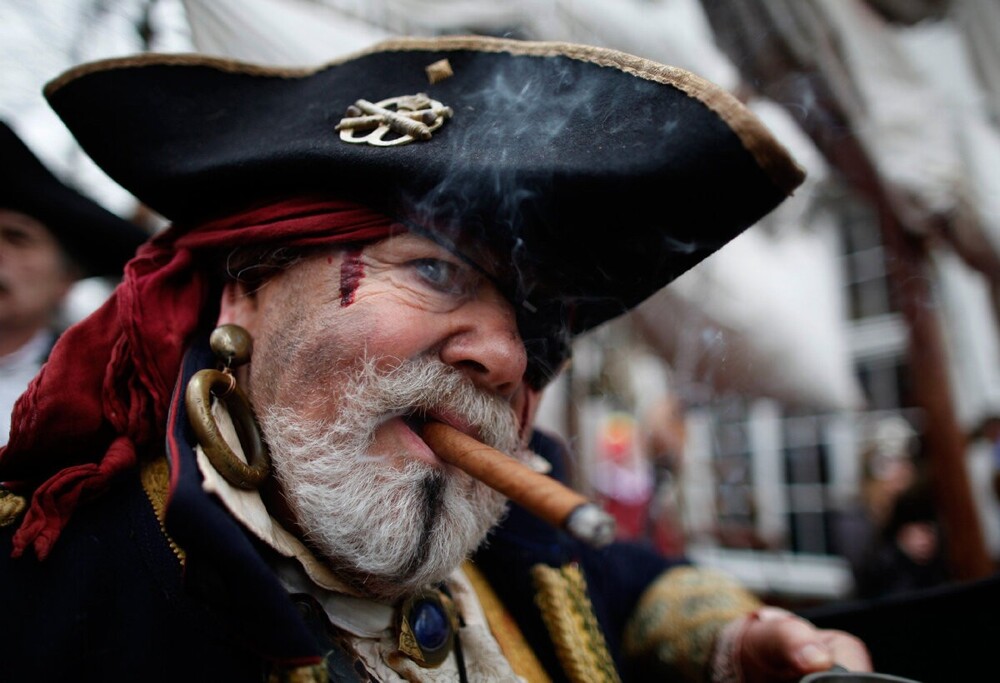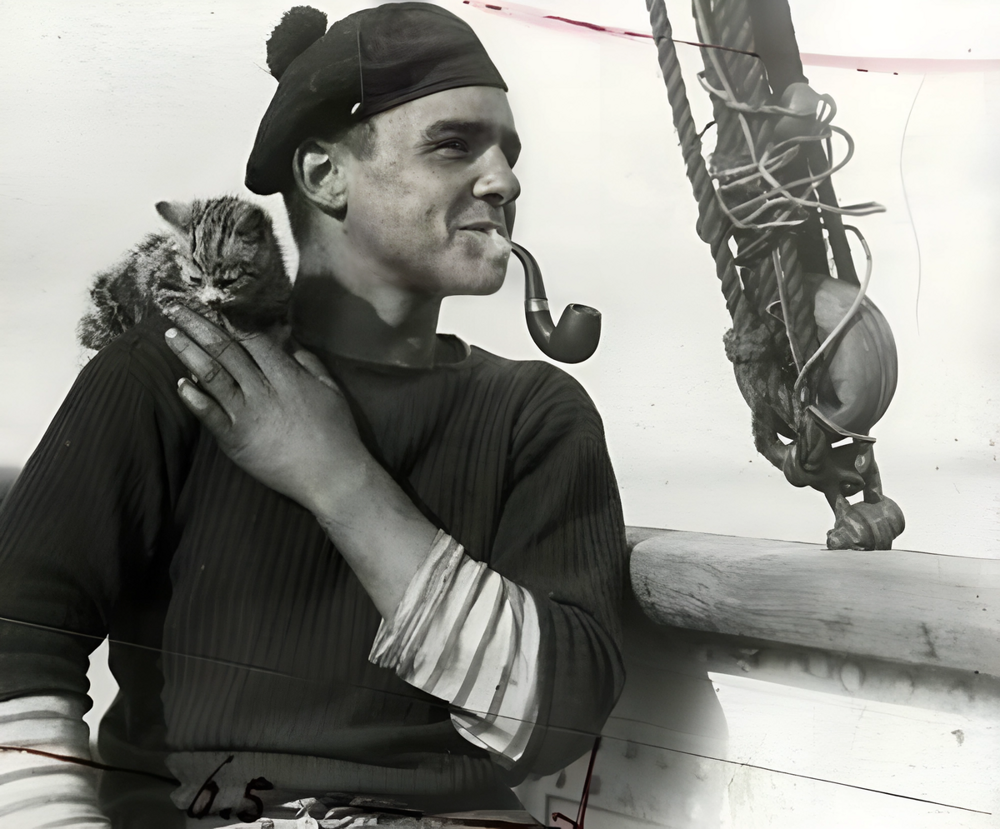Why were sailors previously only allowed to smoke pipes and not cigarettes? (4 photos)
In various historical films, the image of a “seasoned” sailor is often emphasized by the fact that he walks thoughtfully with a smoking pipe. 
It turns out that in the old days sailors really only had the right to smoke a pipe, and not ordinary cigarettes, cigarettes or cigarettes. Moreover, if a sailor violated this rule, he could be shackled for 8 days.
But why did such a rule exist on ships?
A short excursion into history 
Europeans discovered tobacco and cigarettes thanks to Christopher Columbus in 1492, when he first met an old smoking Indian on the island of Tobago (from whom the word “tobacco” is believed to have originated). Soon, the first sailors who became acquainted with tobacco began to imitate the Indian habit of rolling dried and crushed tobacco leaves into palm leaves, setting them on fire and smoking them.
For example, it is known that Columbus’s companion, Captain Rodrigo de Jerez, who was addicted to tobacco, was even arrested and thrown into prison upon his return to Spain, because the guards decided that the devil himself had possessed the captain, who was emitting smoke from his mouth.
It is known that for many centuries the Indians wrapped smoking tobacco in banana peels, tree bark and corn leaves; this principle was most widespread among the Mayans.
Later, the Spaniards brought similar “roll-up rolls” to Europe and replaced corn wrappers with thin paper. The first cigars, made using a similar (but not exact) principle as those used today, were produced by the Spanish company Tabacalera in Seville towards the end of the 17th century. It was then that the idea was born to construct a cigar with filler, binder and wrapper.
Consequently, the cigar industry was created by the Spanish. In the middle of the 18th century, cigars were exported to Holland. By the end of that century, cigar production had spread from Spain to France and Germany, and then to England, where the first cigarette factory appeared.
So why were sailors on the ship prohibited from smoking cigarettes? 
Tobacco smoking among sailors began to be strictly regulated, not so much because of health problems (the dangers of which were not yet known), but because of the danger of a fire on board.
There is at least one famous case in the 16th century where gunpowder on a Spanish warship accidentally ignited due to a sailor smoking next to it, resulting in an explosion and fire that consumed the ship so quickly that many on board died in smoke and flame. The remaining sailors rushed into the water and drowned.
However, mentions of fires on ships in old ship logs are quite common.
Therefore, the earliest Dutch maritime law on tobacco products, adopted by the privateer fleet in the Caribbean, dates back to 1627 and indicates that sailors had the right to smoke only in a special place on deck called a bowenette in front of the mainmast, where during the day there was a hanging for this purpose. special burning wick.
And at the end of the 18th century, on many ships it was completely forbidden to smoke rolled cigarettes, and if a sailor smokes a cigarette on board rather than a pipe, then he can be shackled for a period of a week (but more about pipes later).
At the first violation of the rule and smoking in the wrong place, the unlucky smoker was shackled for eight days and officially reprimanded. If he broke the rules again, he was flogged and his entire month's salary was taken away.
Smoking at night was completely prohibited, and for violating this rule the terms and number of punishments were limited. For comparison, a sailor was punished for drunkenness for about 14 days and kept on bread and water.
At the end of the 16th century, Europeans invented clay pipes for smoking and this invention influenced almost all sailors in Europe.
Therefore, it is logical that in many countries smoking regular cigarettes was prohibited on merchant and military ships, and preference was given only to pipes 
The snorkel was more convenient, safe and reliable in a marine environment.
It made it possible to more accurately control smoke consumption and did not create spills or fires that were dangerous for the ship, often caused by falling coal on a flammable surface (such as oil or gunpowder).
After all, the seaski of the past dealt with wooden ships equipped with cannons and gunpowder. And adding cigarettes here creates a rather explosive combination, which could have been easily avoided by simply banning regular cigarettes and giving preference to pipes.
Although, what can we say about ships of past centuries, if in the 21st century the entire Star Princess cruise ship caught fire because of one cigarette.
In addition, the image of a pipe smoker is associated with calm and reflection for a reason.
After all, it is known that smoking a pipe helps to prolong the smoking process, which promotes calm, reflection and even meditation during a long voyage on a ship.
Spanish sailors even often quoted an Indian proverb: “A pipe is to a troubled soul what a mother’s caress is to her crying child.”
Thus, a pipe was a necessity for a sailor. It was the safest, most practical and convenient way for sailors to enjoy smoking while at sea.






























